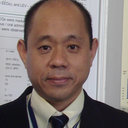[Nineteen cases of school-aged children with degenerative or metabolic neurological disorders initially presenting with learning difficulty and/or behavior disturbance].
Palavras-chave
Resumo
We reported 19 cases of school-aged children. They were initially judged to have learning difficulty or school maladaptation because of attention deficits, hyperactive behaviors or poor school performance, followed by the diagnosis such as degenerative or metabolic neurological diseases. The patients consisted of 4 cases of adrenoleukodystrophy, 5 cases of dentatorubral-pallidoluysian atrophy, 3 cases of Sanfilippo syndrome, 3 cases of subacute sclerosing panencephalitis, and each one case of juvenile Gaucher disease, juvenile Huntington disease, juvenile metachromatic leukodystrophy and Leigh disease. They had markedly poor school performance, and/or abnormal behaviors, followed by seizures, character disorders or psychomotor regression. The diagnostic clues included brain CT scan and/or MRI, peculiar facial appearance and notable family histories. When the children were indicated to have learning difficulty or maladjustment to school life, we should make deliberate differential diagnoses before concluding that they have a learning disorder and/or attention-deficit/hyperactivity disorder. Instead they should be recommended to visit child neurologists, when they present with any problems as aforesaid.


